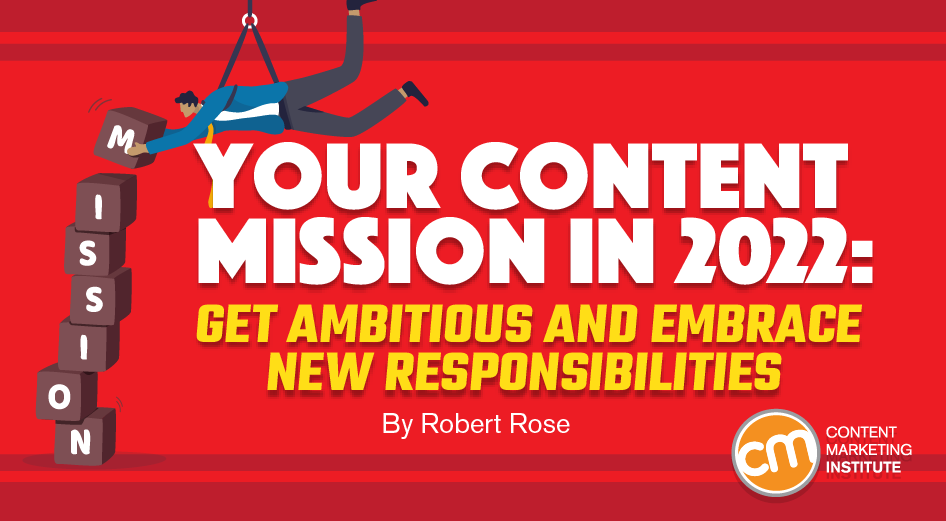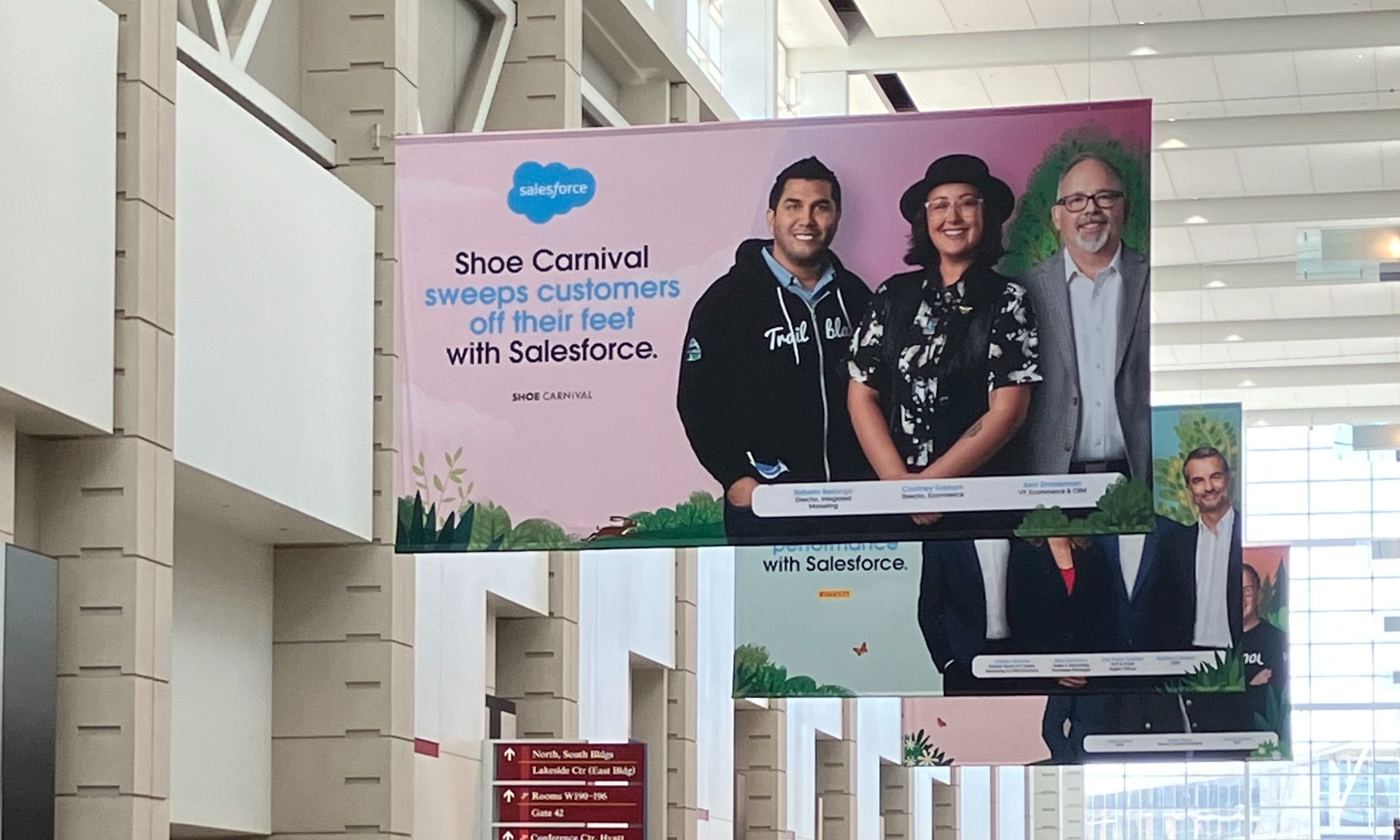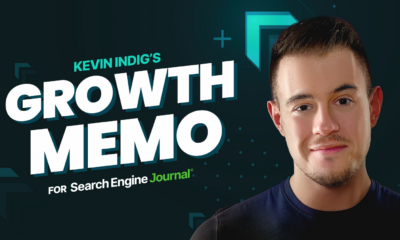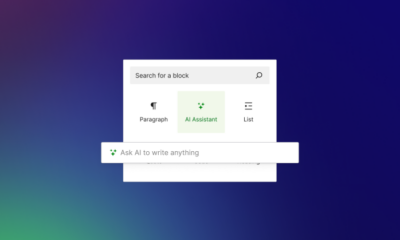MARKETING
Get Ambitious and Embrace New Responsibilities

We spend a lot of time at CMI thinking about the purpose of content in business. It sounds funny. The purpose of content in business?
When we start work with a company on putting a functional plan around their content, a senior leader in the business (usually somebody in finance or operations) often says, “Isn’t that word content too big? Doesn’t that mean everything we do?”
“Yup. It does,” I reply, followed by an awkward moment of silence.
Without realizing it, they’ve unconsciously made the argument of why it is valuable to sort out the function of content in their company.
Now, of course, we need to back off a little from saying it covers “everything.” What we’re going to solve in a consulting engagement, one of our events, a webinar, a blog post, or even CMI University can’t encompass “everything.”
So, I explain to the inquisitor that what we mean is by developing a strategy for content you can equate content with communication. If your content is intended to communicate and deliver value to our audiences, then it is worth putting a plan around the creation of those things. That’s a content strategy.
It’s worth putting a plan around your #content that’s designed to deliver value to your audience. That’s a #ContentStrategy, says @Robert_Rose via @CMIContent. Click To Tweet
More than a decade ago, my good friend and CMI founder Joe Pulizzi put a stake in the ground for what would become known as content marketing. I loved that he said it so very plainly: Marketers now have the opportunity to provide “truly relevant and useful content to prospects and customers to help them solve their issues.”
The beauty of that definition is in the stated purpose. Content is purposely designed to be more than classic marketing and advertising, where content’s purpose is to persuade people to become or stay customers. In the case of content marketing, content is created to help. Full stop. In other words, the content is valuable to the audience without any context of the brand or its products.
Joe’s original definition is still reflected on CMI’s definitions page. To this day, it remains in the No. 1 position for Google searchers who ask, “What is content marketing?”
But, of course, like everything in marketing, our beloved practice has evolved.
Tracking the evolving content ecosystem
Well before content marketing entered our lexicon, the phrase “content strategy” was a key – if not fairly niche – part of business strategy. The term arguably predates digital, but the internet, large websites, structured authoring (i.e., separating the content from its presentation), and dynamically assembling meaningful content gave momentum to the practice of content strategy.
Over eight years ago, I leaned in on my background in enterprise content and attempted to stratify the approaches of both content strategy and content marketing. Content marketing is often the biggest opportunity, the largest gap in capabilities, or the most misunderstood of practices. But it is but one piece in the larger strategic content puzzle.
Content marketing always has (and will always be) a subset of content strategy. That said, both practices have the same goal – effective, efficient business communication.
More recently, new subsets of content marketing have emerged. Whether it’s branded content, brand journalism, native advertising, or even customer experience, we’ve written to separate the signal from the noise on those approaches.
Here we are in 2022, and let’s just say the last two years have been – well – difficult. It’s been hard to get our bearings, hard to set a long-term strategy, and hard to know where to make our biggest investments.
But those disruptions also have been an accelerator. Changes in our digital capabilities, the media by which we consume content, the talent pool and skillsets, and where we do our work have pushed us to innovate. Content leaders, strategists, managers, writers, SEO specialists, technologists, AI practitioners, and data scientists have all found the optimal ways to make content in marketing and communications a scalable, measured, and exciting approach for business.
2022 is the time to make #content a scalable, measured, and exciting approach for business, says @Robert_Rose via @CMIContent. Click To Tweet
Now we sit on the cusp of the third era of the web.
Can you even imagine what things like crypto, blockchain, DAOs (decentralized autonomous organizations), and the metaverse technologies will do to our practice?
No. You can’t. Not yet.
From opportunity to responsibility
We’re evolving at CMI, too. We’re humbled at the level of innovation. In the last 12 months, we’ve seen:
So, we still fundamentally believe companies have the opportunity to operate like media companies. But, in 2022, it’s not only an opportunity; it’s a responsibility to act more like media companies.
In 2022, it’s not only an opportunity; it’s a responsibility of companies to act more like media companies, says @Robert_Rose via @CMIContent. Click To Tweet
The subtitle of Edelman’s seminal 2022 Trust Barometer is “Societal Leadership is now a Core Function of Business.” As the authors write, “We have studied trust for more than 20 years and believe that it is the ultimate currency in the relationship that all institutions – business, governments, NGOs and media – build with their stakeholders.”
Think about that quote as I refer back to Joe’s 2009 definition of content marketing: “truly relevant and useful content to prospects and customers to help them solve their issues.”
Content marketing is at the heart of any business that wants to build trust.
#ContentMarketing is at the heart of any business that wants to build trust, says @Robert_Rose via @CMIContent. Click To Tweet
Where CMI is headed
If I can humble brag for a minute, at CMI, we have been fighting the good fight for the last decade. We haven’t always gotten it right, but we’ve had a front-row seat to what’s actually going on in the world of business content.
Over the last two years, my team and I have worked directly with more than 60 of the Fortune 1,000 companies. The research team recently produced our 12th annual content marketing research that surveyed about 1,400 marketers around the globe. Lastly, despite the pandemic and lockdowns, Content Marketing World continued last year with thousands of marketers from more than 50 countries gathering both virtually and in person to talk about the strategic approach of content.
Here’s the point: We see what’s really going on in the community. And our community is you – the practitioner. We see you.
As we move into 2022 and beyond, you’ll see us focus on some of these three major observations:
1. Content marketing and content strategy will merge
Successful businesses take the function of enterprise content seriously. They recognize content is communication, and making it functional is more than just copywriting, thought leadership, storytelling, metadata structures, content management, SEO, or workflow processes. It is all those things.
Successful businesses recognize making #content functional is more than just copywriting, thought leadership, storytelling, metadata structures, SEO, workflow processes, says @Robert_Rose via @CMIContent. Click To Tweet
We see organizations moving beyond the one or two ad-hoc content marketing practitioners to holistic, specialized teams focused on strategic content. Prepare for the great merger of marketing content, content marketing, and content operations. Content is a business strategy. Copywriting, storytelling, measurement, and structured content operations will become a single, functional strategy.
To achieve that, content marketers will need to upskill in strategy, technology, and content structures. Content strategists will need to upskill in media operations, creative, journalism, storytelling. And everybody will need to upskill into measurement design.
2. The best content teams will enable the story
Spoiler alert: If you think you can check the content strategy box by installing a content studio of writers, designers, podcasters, and designers who are chartered to build internal capacity for the increasing demand for content, think again.
Robert’s content law is this: The need for more content expands in direct proportion with the number of resources allocated to it.
A successful strategy is integrated. Content creation, management, and measurement must be organizational strengths. All teams need to be empowered to create content for their audiences. The secret superpower of a content team is being the arbiter of good – to create, help, guide, and direct (when necessary) individuals at the edges of the business to be consistent and engaging storytellers.
I promise you CMI will be talking a lot about this in the coming months.
3. Goals and measurability will continue to frustrate
The through-line in the struggle for content to gain traction in the business is how to support goals and measure progress towards them.
The double-edged sword is that when content grows to be a business strategy, it becomes critically important to measure, and it becomes much more complex to measure.
It is inherently difficult to precisely define value in measuring communication clearly across all parts of the customer’s journey. We have seen some performance frameworks emerge, and certainly, more will become available.
However, the operational model itself may become one of the most important measures of success. In other words, when content strategy becomes the foundational model for communication in the business, the content must work harder. Content must be reusable and scalable across multiple approaches. Thus, businesses will need to measure performance as it relates to the audience’s response and how effectively you’re saying it.
What this means for you
Our goal remains largely the same as it has since Joe wrote his seminal blog post – to advance the practice of content marketing. But if this mission is our North Star, we must enhance our focus with better telescopes.
And your future is the focus of all of this. In the ’20s, a modern content practitioner:
- Is a leader in the organization’s communication strategy. The team is not an internal, on-demand content vending machine but part of the fabric of every customer experience with the business.
- Understands the differences and intricacies of all operational approaches of content in the business, from content marketing and content operations to branded content, native advertising, and anything else that inherently drives the creation of media-powered customer experiences as a business strategy.
- Aligns goals and measurement with the strategy. The content team members of today and tomorrow build audiences through owned media experiences that can be monetized in multiple ways. They drive promotional execution of content for short-term advertising campaigns. They drive engagement and shares on social media and organic search traffic from smart earned media and word-of-mouth strategies. But they also support visibility, transparency, and internal communication of the lifecycle of content – from ideation to creation, management, activation, promotion, and even archival.
- Supports every part of the customer’s journey. The content teams are not just top-of-the-funnel sales enablement teams. They are not just SEO-focused teams driving brand awareness. They are not just customer-support organizations managing how-to videos or customer events. Content teams are the experts in delivering audience value at every stage of the customer journey.
#Content teams are the experts in delivering audience value at every stage of the customer journey, says @Robert_Rose via @CMIContent. Click To Tweet
And thus, CMI expands our mission, our editorial coverage, our teaching, and our learning as well. You will see more coverage on topics such as content operations, structured content, technology, as well as educational content on native advertising, branded content, storytelling. And you may even see us diving into the rabbit hole of Web 3.0 and its implications on our practice.
It’s a unified family of specific, related approaches to the strategic use of media in our business.
CMI is here to support you – the content teams, the leaders, the practitioners, the influencers – all of you who make content work in business.
Cover image by Joseph Kalinowski/Content Marketing Institute
MARKETING
YouTube Ad Specs, Sizes, and Examples [2024 Update]
![YouTube Ad Specs, Sizes, and Examples [2024 Update] YouTube Ad Specs, Sizes, and Examples](https://articles.entireweb.com/wp-content/uploads/2024/06/YouTube-Ad-Specs-Sizes-and-Examples.jpg)
Introduction
With billions of users each month, YouTube is the world’s second largest search engine and top website for video content. This makes it a great place for advertising. To succeed, advertisers need to follow the correct YouTube ad specifications. These rules help your ad reach more viewers, increasing the chance of gaining new customers and boosting brand awareness.
Types of YouTube Ads
Video Ads
- Description: These play before, during, or after a YouTube video on computers or mobile devices.
- Types:
- In-stream ads: Can be skippable or non-skippable.
- Bumper ads: Non-skippable, short ads that play before, during, or after a video.
Display Ads
- Description: These appear in different spots on YouTube and usually use text or static images.
- Note: YouTube does not support display image ads directly on its app, but these can be targeted to YouTube.com through Google Display Network (GDN).
Companion Banners
- Description: Appears to the right of the YouTube player on desktop.
- Requirement: Must be purchased alongside In-stream ads, Bumper ads, or In-feed ads.
In-feed Ads
- Description: Resemble videos with images, headlines, and text. They link to a public or unlisted YouTube video.
Outstream Ads
- Description: Mobile-only video ads that play outside of YouTube, on websites and apps within the Google video partner network.
Masthead Ads
- Description: Premium, high-visibility banner ads displayed at the top of the YouTube homepage for both desktop and mobile users.
YouTube Ad Specs by Type
Skippable In-stream Video Ads
- Placement: Before, during, or after a YouTube video.
- Resolution:
- Horizontal: 1920 x 1080px
- Vertical: 1080 x 1920px
- Square: 1080 x 1080px
- Aspect Ratio:
- Horizontal: 16:9
- Vertical: 9:16
- Square: 1:1
- Length:
- Awareness: 15-20 seconds
- Consideration: 2-3 minutes
- Action: 15-20 seconds
Non-skippable In-stream Video Ads
- Description: Must be watched completely before the main video.
- Length: 15 seconds (or 20 seconds in certain markets).
- Resolution:
- Horizontal: 1920 x 1080px
- Vertical: 1080 x 1920px
- Square: 1080 x 1080px
- Aspect Ratio:
- Horizontal: 16:9
- Vertical: 9:16
- Square: 1:1
Bumper Ads
- Length: Maximum 6 seconds.
- File Format: MP4, Quicktime, AVI, ASF, Windows Media, or MPEG.
- Resolution:
- Horizontal: 640 x 360px
- Vertical: 480 x 360px
In-feed Ads
- Description: Show alongside YouTube content, like search results or the Home feed.
- Resolution:
- Horizontal: 1920 x 1080px
- Vertical: 1080 x 1920px
- Square: 1080 x 1080px
- Aspect Ratio:
- Horizontal: 16:9
- Square: 1:1
- Length:
- Awareness: 15-20 seconds
- Consideration: 2-3 minutes
- Headline/Description:
- Headline: Up to 2 lines, 40 characters per line
- Description: Up to 2 lines, 35 characters per line
Display Ads
- Description: Static images or animated media that appear on YouTube next to video suggestions, in search results, or on the homepage.
- Image Size: 300×60 pixels.
- File Type: GIF, JPG, PNG.
- File Size: Max 150KB.
- Max Animation Length: 30 seconds.
Outstream Ads
- Description: Mobile-only video ads that appear on websites and apps within the Google video partner network, not on YouTube itself.
- Logo Specs:
- Square: 1:1 (200 x 200px).
- File Type: JPG, GIF, PNG.
- Max Size: 200KB.
Masthead Ads
- Description: High-visibility ads at the top of the YouTube homepage.
- Resolution: 1920 x 1080 or higher.
- File Type: JPG or PNG (without transparency).
Conclusion
YouTube offers a variety of ad formats to reach audiences effectively in 2024. Whether you want to build brand awareness, drive conversions, or target specific demographics, YouTube provides a dynamic platform for your advertising needs. Always follow Google’s advertising policies and the technical ad specs to ensure your ads perform their best. Ready to start using YouTube ads? Contact us today to get started!
MARKETING
Why We Are Always ‘Clicking to Buy’, According to Psychologists

Amazon pillows.
MARKETING
A deeper dive into data, personalization and Copilots

Salesforce launched a collection of new, generative AI-related products at Connections in Chicago this week. They included new Einstein Copilots for marketers and merchants and Einstein Personalization.
To better understand, not only the potential impact of the new products, but the evolving Salesforce architecture, we sat down with Bobby Jania, CMO, Marketing Cloud.
Dig deeper: Salesforce piles on the Einstein Copilots
Salesforce’s evolving architecture
It’s hard to deny that Salesforce likes coming up with new names for platforms and products (what happened to Customer 360?) and this can sometimes make the observer wonder if something is brand new, or old but with a brand new name. In particular, what exactly is Einstein 1 and how is it related to Salesforce Data Cloud?
“Data Cloud is built on the Einstein 1 platform,” Jania explained. “The Einstein 1 platform is our entire Salesforce platform and that includes products like Sales Cloud, Service Cloud — that it includes the original idea of Salesforce not just being in the cloud, but being multi-tenancy.”
Data Cloud — not an acquisition, of course — was built natively on that platform. It was the first product built on Hyperforce, Salesforce’s new cloud infrastructure architecture. “Since Data Cloud was on what we now call the Einstein 1 platform from Day One, it has always natively connected to, and been able to read anything in Sales Cloud, Service Cloud [and so on]. On top of that, we can now bring in, not only structured but unstructured data.”
That’s a significant progression from the position, several years ago, when Salesforce had stitched together a platform around various acquisitions (ExactTarget, for example) that didn’t necessarily talk to each other.
“At times, what we would do is have a kind of behind-the-scenes flow where data from one product could be moved into another product,” said Jania, “but in many of those cases the data would then be in both, whereas now the data is in Data Cloud. Tableau will run natively off Data Cloud; Commerce Cloud, Service Cloud, Marketing Cloud — they’re all going to the same operational customer profile.” They’re not copying the data from Data Cloud, Jania confirmed.
Another thing to know is tit’s possible for Salesforce customers to import their own datasets into Data Cloud. “We wanted to create a federated data model,” said Jania. “If you’re using Snowflake, for example, we more or less virtually sit on your data lake. The value we add is that we will look at all your data and help you form these operational customer profiles.”
Let’s learn more about Einstein Copilot
“Copilot means that I have an assistant with me in the tool where I need to be working that contextually knows what I am trying to do and helps me at every step of the process,” Jania said.
For marketers, this might begin with a campaign brief developed with Copilot’s assistance, the identification of an audience based on the brief, and then the development of email or other content. “What’s really cool is the idea of Einstein Studio where our customers will create actions [for Copilot] that we hadn’t even thought about.”
Here’s a key insight (back to nomenclature). We reported on Copilot for markets, Copilot for merchants, Copilot for shoppers. It turns out, however, that there is just one Copilot, Einstein Copilot, and these are use cases. “There’s just one Copilot, we just add these for a little clarity; we’re going to talk about marketing use cases, about shoppers’ use cases. These are actions for the marketing use cases we built out of the box; you can build your own.”
It’s surely going to take a little time for marketers to learn to work easily with Copilot. “There’s always time for adoption,” Jania agreed. “What is directly connected with this is, this is my ninth Connections and this one has the most hands-on training that I’ve seen since 2014 — and a lot of that is getting people using Data Cloud, using these tools rather than just being given a demo.”
What’s new about Einstein Personalization
Salesforce Einstein has been around since 2016 and many of the use cases seem to have involved personalization in various forms. What’s new?
“Einstein Personalization is a real-time decision engine and it’s going to choose next-best-action, next-best-offer. What is new is that it’s a service now that runs natively on top of Data Cloud.” A lot of real-time decision engines need their own set of data that might actually be a subset of data. “Einstein Personalization is going to look holistically at a customer and recommend a next-best-action that could be natively surfaced in Service Cloud, Sales Cloud or Marketing Cloud.”
Finally, trust
One feature of the presentations at Connections was the reassurance that, although public LLMs like ChatGPT could be selected for application to customer data, none of that data would be retained by the LLMs. Is this just a matter of written agreements? No, not just that, said Jania.
“In the Einstein Trust Layer, all of the data, when it connects to an LLM, runs through our gateway. If there was a prompt that had personally identifiable information — a credit card number, an email address — at a mimum, all that is stripped out. The LLMs do not store the output; we store the output for auditing back in Salesforce. Any output that comes back through our gateway is logged in our system; it runs through a toxicity model; and only at the end do we put PII data back into the answer. There are real pieces beyond a handshake that this data is safe.”
-

 SEARCHENGINES6 days ago
SEARCHENGINES6 days agoBillions Of Google goo.gl URLs To 404 In The Future
-
SEARCHENGINES4 days ago
Daily Search Forum Recap: July 22, 2024
-

 SEARCHENGINES7 days ago
SEARCHENGINES7 days agoGoogle Core Update Coming, Ranking Volatility, Bye Search Notes, AI Overviews, Ads & More
-

 SEO5 days ago
SEO5 days ago11 Copyscape Alternatives To Check Plagiarism
-

 SEO6 days ago
SEO6 days agoGoogle Warns Of Last Chance To Export Notes Search Data
-
SEARCHENGINES3 days ago
Daily Search Forum Recap: July 23, 2024
-

 AFFILIATE MARKETING6 days ago
AFFILIATE MARKETING6 days agoThe Top 5 AI Tools That Can Revolutionize Your Workflow and Boost Productivity
-

 SEO4 days ago
SEO4 days agoSystem Builders – How AI Changes The Work Of SEO
















You must be logged in to post a comment Login